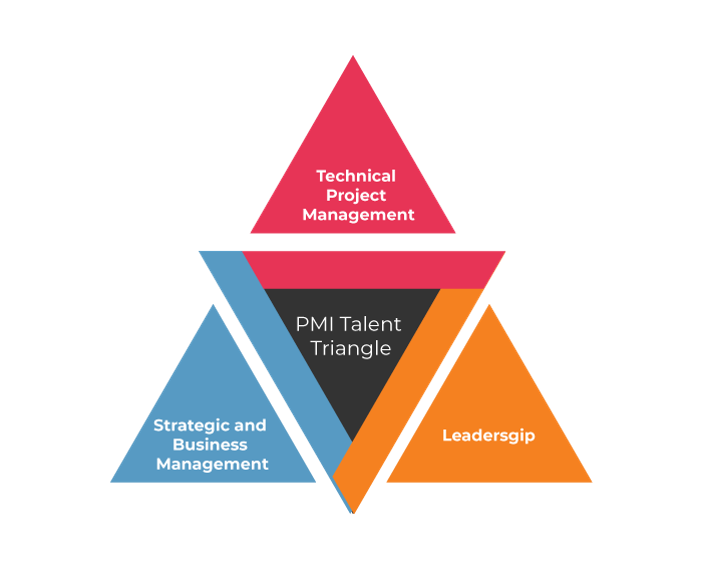
The Project Management Body of Knowledge Guide (PMBOK Guide) serves as a recognized standard for the profession of project management. A standard is a formal document that defines established norms, methods, processes, rules, and practices. The knowledge and facts contained in this standard are evolved and derived from the acclaimed effective practices of project management practitioners who contributed to the development of this standard. So, the majority of the questions in the PMP Exam are based on or derived from the information given in the PMBOK Guide. As a PMP candidate or aspirant, it is essential to understand the objective, content, and context of this guide. In this article, we will learn about the various components of the PMBOK Guide – Sixth Edition.
What is the Purpose of the PMBOK Guide?
The fundamental purpose of the PMBOK Guide is to recognize and explain generally accepted knowledge and systems that can be applied to the projects. The PMBOK Guide is a subset of the project management body of knowledge that is generally recognized as good practice. Here, generally recognized means the knowledge and practices described in the book can be applied to maximum projects most of the time as it is a standard and there is general agreement about their value and usefulness. Good practice means most people agree that the application of the knowledge, skills, tools, and techniques given in the book can improve the chances of success over many projects.
Although there have been many establishments of pre-defined facts, the project management profession is still emerging. The dynamism in the industry leads to uncertainty and little commonality around terms. The secondary purpose of the PMBOK Guide is to help provide a common lexicon or vocabulary. It can be used and understood by all for applying project management concepts. A common vocabulary is a crucial element of any discipline.
However, it is possible that these practices are followed by the masses but cannot be expected to be applied uniformly to all projects. It’s always the decision of the project team to determine what the most suitable and feasible practice for any given project would be.
What Changed in the PMBOK Guide – Sixth Edition?
1. Processes Organized by Process Groups
In PMBOK Guide – sixth edition, the processes are organized by process groups. This is because processes are more relevant to the process group as compared to a knowledge area.
2. Content of Chapters
In PMBOK 5th edition, there were a total of 13 chapters covering the concepts of the project, program, portfolio, and organizational structures in addition to the life cycle of the project. The PMBOK Guide – the sixth edition combines and strengthens these chapters. In addition to this, the skills and competencies a project manager should possess have been aligned to the PMI Talent Triangle.
3. Names of two Knowledge Areas
The ten knowledge areas in PMBOK 5 still exist in PMBOK 6th edition, but 2 of these knowledge areas’ names have been changed. The time management knowledge area changed to schedule management, and the human resource management changed to resource management in the PMBOK guide – sixth edition.
4. Six Changes in Existing Processes
Estimate Activity Resources belonged to the Planning Process Group and Time Management Knowledge Area. In PMBOK Guide – Sixth Edition, it still belongs to the Planning Process Group, but now it will be part of the Resource Management knowledge area. Six processes are renamed in PMBOK 6 although their content stays the same mainly. The table below shows the changes in process names from PMBOK 5 to PMBOK Guide – Sixth Edition.
| PMBOK 5th Edition | PMBOK 6th Edition |
| Perform Quality Assurance | Manage Quality |
| Plan Human Resource Management | Plan Resource Management |
| Control Communications | Monitor Communications |
| Control Risks | Monitor Risks |
| Plan Stakeholder Management | Plan Stakeholder Engagement |
| Control Stakeholder Engagement | Monitor Stakeholder Engagement |
5. Addition of Information on Agile Methodologies
Adding more information on the adaptive and iterative methods helps one to keep up with current practices. Agile and adaptive practices are a significant part of all business strategies and projects now. Numerous projects are incorporating the agile methodology on their projects. So, PMI has added the relevant agile practices needed for each knowledge area in the PMBOK Guide – Sixth Edition.
| Enroll in our Online PMP Certification Training today, and develop a strong foundation in the principles of Project Management. |
6. Addition of Three New Processes
The process of close procurement in the procurement Knowledge area has been removed in the PMBOK Guide – Sixth Edition. On the other hand, three new processes in different Knowledge areas are added. The following table lists the processes and the process group and knowledge area to which they belong:
| Process | Process Group | Knowledge Area |
|---|---|---|
| Manage Project Knowledge | Executing | Integration Management |
| Implement Risk Responses | Executing | Risk Management |
| Control Resources | Monitoring and Controlling | Resource Management |
Therefore, to PMBOK’s 5th edition 47 processes, three are added. Then, from that, one is removed. So, essentially 49 processes are mentioned in PMBOK 6th edition.
7. Other Changes
Some other additions included in the 6th edition are:
- Trends and emerging practices
- Tailoring considerations
- A higher weight on Strategic and Business Knowledge
- A new section on the role of the project manager
While important, it is not easy to read through the PMBOK Guide-it is almost 1000 pages of essential material. It is necessary to pass qualification exams to read the PMBOK Guide, but how you chose to read it depends on how you understand it best. Also, it would help if you decided on the Guide type you want — a hard copy or a web edition.
In this section, we’ll talk about my experience of how I cleared the PMP exam and how you can master the PMBOK guide for the PMP exam quickly.
Suggestions for Preparing with the PMBOK Guide
- Cover the PMBOK guide at least two times. Many top project managers have told me to do this because it works very well! I would also suggest that you read a section and then do some study guides and then repeat the step before you consider your preparation complete.
- Create a schedule of research before you begin. It’s useful to keep track of your timelines to understand the PMBOK guide.
- Don’t bring too many on the Memory Dump. The Brain Dump is a little overhyped. Yet it was a GREAT weapon in memory. I practiced it every day and got much better.
- Find out great resources online such as Rita Mulcahy and the Magoosh PMP prep blog. For the content in the chapter, I found it helpful to read the chapter along with one or two external applications. Thus the material becomes more available. Not only did I read it in the PMBOK guide, but I also got the knowledge explanation from someone else. Approaching the PMBOK this way executed comes experience much better for me.
- Let PMBOK apply to your projects. The final step in ensuring the PMBOK guide can come to life for you is to connect it to your real-life ventures. That should be simple if you are in an organization that already uses the PMP best practices according to the PMBOK guide. I’m not, but I had to function, consider, and reconsider in terms of my projects to get the Guide. This method has been immensely helpful not only for my comprehension of passing the test but also for my career.
- Although the easy alternative appears to be reading a book from top to bottom, many experts have discovered that reading the contents of the book would suit them well in a particular order.
The Guide on PMBOK Covers:
- Foundational patterns
- Practice patterns and framework
- The Agile Practice Guide
- PMI Lexicon of Project Management Terms
Note: PMBOK Guide – Seventh Edition was introduced in the month of August 2021. Check out the various components that are introduced in the new edition.
Conclusion
Most project managers use the PMBOK Guide for guidance while they use other research materials such as a similar tutorial, video instruction, or other reading materials. Regardless of how you review the PMBOK tutorial, to make sure you ace the PMP test, you have to respond to it in one way or the other. The revision of the PMBOK guide happens regularly to ensure the guide covers the latest best practices globally.
Know more about project management best practices through Invensis Learning’s Project Management certification training on PMP Classroom Training, CAPM Online Course, Prince2 Foundation Course Online, Project Management Fundamentals, P3O, and MSP. We are a trusted training partner for Fortune 500 companies and Government institutions globally.

















